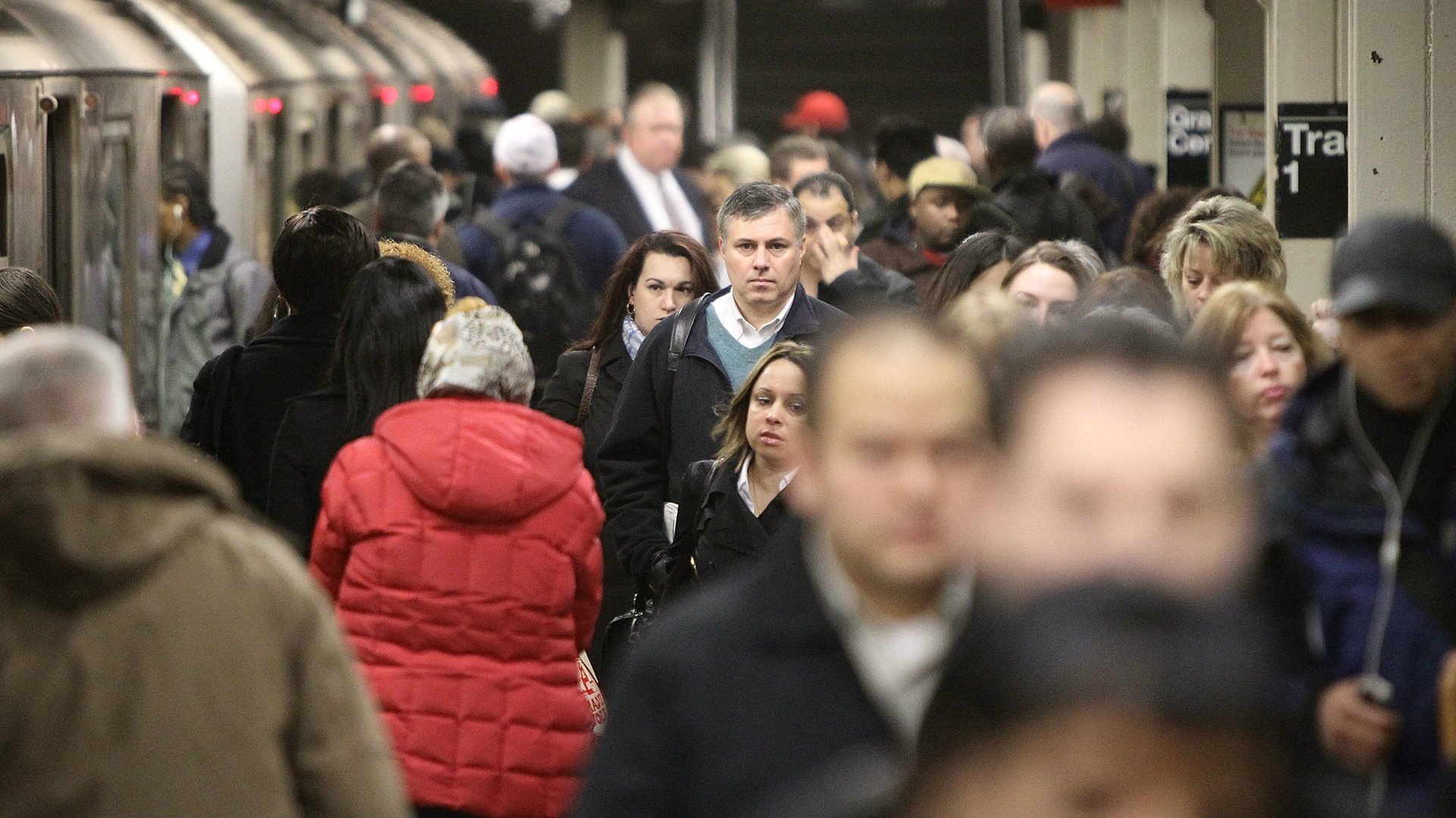Subways are the heart of New York’s economy and it’s going to take major surgery to get the city back to life
Every day, more than 2 million people use New York City’s mass transit system to get to work in Manhattan’s core, below 59th Street. They know the streets are paved with gold—their jobs, on average pay more than jobs anywhere else in the region or even the US. But Superstorm Sandy has had crippling effect on the city’s transportation knocking out the subways and other commuter-rail systems, such as the PATH and NJ Transit, which connect neighboring New Jersey to lower Manhattan and midtown, as well as the Long Island Railroad and Metro North Railroad, which connect to New York suburbs.


Every day, more than 2 million people use New York City’s mass transit system to get to work in Manhattan’s core, below 59th Street. They know the streets are paved with gold—their jobs, on average pay more than jobs anywhere else in the region or even the US. But Superstorm Sandy has had crippling effect on the city’s transportation knocking out the subways and other commuter-rail systems, such as the PATH and NJ Transit, which connect neighboring New Jersey to lower Manhattan and midtown, as well as the Long Island Railroad and Metro North Railroad, which connect to New York suburbs.
Today, buses were restored, although lines snaked around entire blocks to board, and commuters traveling by car or taxi faced gridlock. Under New York City traffic conditions, a lane of road will take perhaps 1,000 people per hour; a loaded subway train can take that many every two minutes. That is why the agglomeration of finance, publishing, retail, high-tech, food, and other industries, not to mention tourism, all work on a relatively small island.
People come in horizontally (trains) and go up in skyscrapers vertically (elevators). How does it work? Finance folks—who can afford to live almost anywhere, often in multi-million dollar apartments in the core—have offices in the core and especially lower Manhattan. But they must be helped by folks who sell them papers, serve their food, clean their offices, and on and on. All of these folks can’t live just anywhere; they must live where they can find affordable housing, which is usually at least a half-hour commute by subway. New York’s subways are the only system in the world to operate around the clock and are extremely extensive. To have subways down for even a week causes an economic nightmare. Sure, many folks find other ways, like the grocery chain Fairway’s employees coming to work by taxi.
Partial subway service is due to be restored tomorrow but the bulk of the system could take weeks, even months to be up and running again. Why will they be down so long? The tunnels and many stations have been flooded, much with saltwater which is a great conductor of electricity, as well as a very corrosive liquid. To get the more-than 400 miles of subways up and running, water must be pumped out and then the tracks must be walked and inspected every inch of the way. Debris has to be taken off the track, the switches and signals and other electric and electronic controls dried, cleaned, repaired or replaced and tested. Then and only then, can the power be restored, small-section by small-section, to be sure all is okay, and when all is okay, test trains have to be run. It takes time to both get the system running and to do so to ensure safety of both the workers and riders. If this is done for the whole system in less then a week, it will be amazing and a true testament to those who really run the system—the system maintainers, electricians, bus and subway car maintenance people and so on.
Hurricanes over the last decade have not only been occurring with more frequency, but with more severity. Many earth scientists have been saying that New York City is due for a surge and it got one big time. Is this a once in 100-year storm? Probably not. So should we build some storm gates at tunnel entrances and redesign subway entrances and grates to be closed in storms at great capital expense? It is definitely time to rethink the benefit-cost equations. New York can’t afford another Sandy.